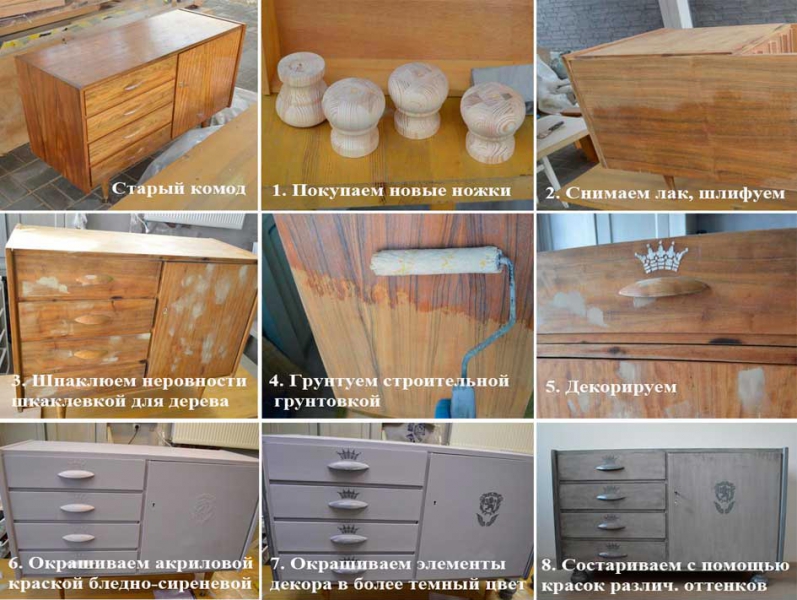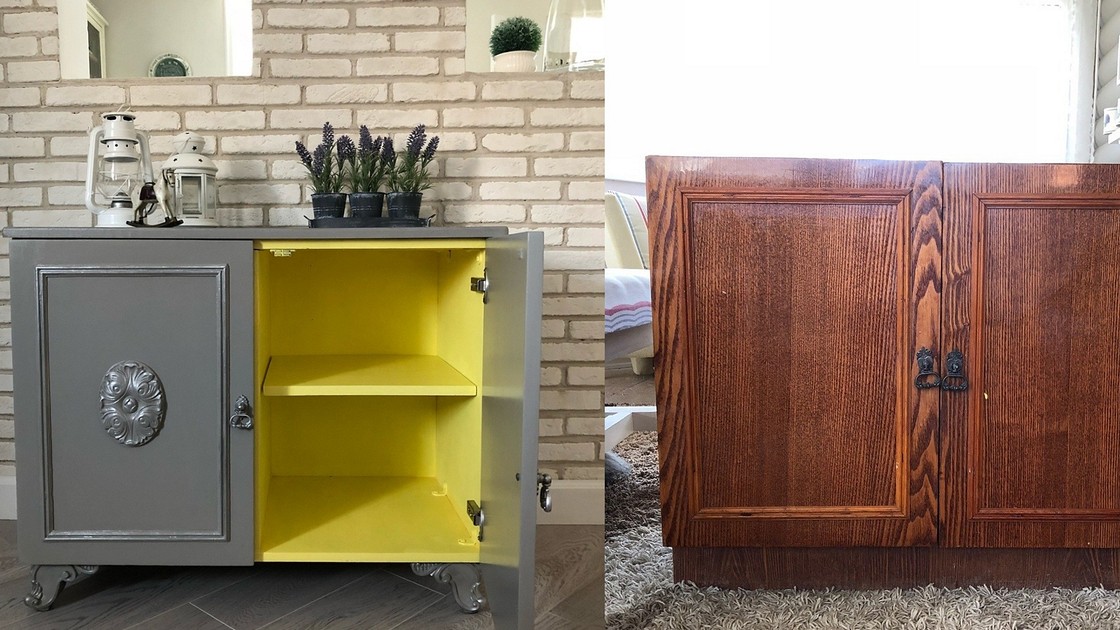Как перекрасить лакированный шкаф — 6 шагов (с иллюстрациями)
Узнайте, как легко и красочно обновить интерьер! В нашей статье «Как перекрасить лакированный шкаф — 6 шагов с иллюстрациями» вы найдете подробные инструкции и советы по тому, как превратить ваш шкаф в настоящий акцент комнаты. Расскажем, как покрасить лакированный шкаф шаг за шагом, сопровождая каждый этап наглядными иллюстрациями. Получите новый облик вашей мебели с легкостью!

Painting cabinets is a great way to transform a room’s aesthetic. No matter what finish your cabinets are, it is possible to paint over them if you take the appropriate preparatory measures. Follow these instructions to paint varnished cupboards.
-
Cover all of the surfaces that you do not want to get paint on. This includes countertops, appliances, walls, trim, backsplashes and floors.
-
Remove the cabinet doors. In addition to removing the cabinet doors from the cabinet bases, you will also need to remove all of the hinges, handles and pulls before painting cabinets. Set all hardware and screws to the side in a safe place. You may want to label your hardware, as necessary, if you have varying door sizes and hardware types.[1]
Advertisement
-
Fill any surface dents, holes and dings. Use a spackling knife to press either spackling compound or wood putty into any imperfections you wish to paint over, then allow the product to dry according to the manufacturer’s instructions.[2]
-
Prepare the cupboard surfaces for painting. Before you paint varnished cupboards, you must remove the high-gloss finish. You may do this either of 2 ways:[3]
- Take an orbital sander to cabinet surfaces you plan on painting, and sand them down until they are no longer shiny. Wipe the dust off with tack cloth.
- Clean the cabinet surfaces with TSP (or a TSP substitute) a heavy-duty cleaner that can be found in any home improvement store, which removes thick layers of grease, dirt and grime. Repeat the TSP cleaning process until the cabinet finish is dull, then wipe the surfaces down with water to remove any remaining traces of TSP.[4]
-
Prime the cupboards. Before painting cabinets, you need to prime them to ensure the paint sticks.[5]
- Use any stain blocking and sealing primer that you purchase from a home improvement store.
- Choose a color as close to your paint color as possible.
- Apply the primer with a roller on long, wide surfaces, and with a brush for the areas that can’t be covered with a roller.
- Allow the primer to dry according to manufacturer’s instructions.
- Paint a second coat before painting cabinets if the first primer coat didn’t fully cover the cabinet surfaces.
-
Paint cabinets. Use a roller and/or a brush as necessary, being sure to apply the paint in long, smooth strokes. Allow the paint to dry in between coats, and repeat the process until you are satisfied with the coverage.[6]
Advertisement
-
Question
How do I choose the right type of paint for my cupboards?
Getting ready to put it on my kitchen cabinets. You can go to a hardware store and ask them to help you pick out the right choice. I have used Devoe Devguard in the past with success, so I would recommend that.
-
Question
How can I tell if I used a primer on my cabinets?
You can tell a good quality primer was used, as it hides surface problems far better and has greater adhesion and leaves a much thicker depth to the look. Without it you will notice all deformities, the wood grain and wood surface problems that a good primer hides.
Ask a Question
200 characters left
Include your email address to get a message when this question is answered.

Advertisement
-
If you plan on reusing your hardware, you may restore the pieces to a like-new finish by soaking them in paint remover while you paint the cabinets, then buffing them with steel wool and rubbing a metal polish into them before reinstalling your cabinet doors.
Advertisement
-
Never sand a varnished surface or apply paint without first ensuring that you are in a well-ventilated area. You may also want to wear a face mask. If you are pregnant, then you should understand that there are health risks associated with breathing dust and vapors, and it is therefore advisable that you avoid them altogether.
-
Be sure to wear rubber gloves when using TSP, and follow the manufacturer’s instructions to ensure your safety.
Advertisement
Things You’ll Need
- Screwdriver
- Orbital sander
- Tack cloth
- Gloves
- Spackling compound or wood putty
- Spackle knife
- TSP (or TSP substitute)
- Rags
- Primer
- Paint rollers
- Paint brushes
- Paint
References
About This Article

Thanks to all authors for creating a page that has been read 92,248 times.
Did this article help you?
Как сделать из старого шкафа новый?
Преобразование старого шкафа в новый можно осуществить с помощью ряда простых шагов:
-
Очистите шкаф от старой краски или лака при помощи шлифовальной машины и шлифовальной бумаги.
-
Заполните все трещины и прорехи дерева деревянной мастикой и затем хорошо заточите поверхность.
-
Нанесите на шкаф покрытие. Выбор покрытия зависит от того, какой эффект вы хотите получить. Например, если вы хотите сохранить древесную текстуру, то можно использовать прозрачный лак или масло.
-
Поменяйте двери на новые. Вы можете купить готовые двери или изготовить их самостоятельно. Перед установкой новых дверей отрегулируйте петли.
-
Установите новые ручки и фурнитуру. Выберите ручки и фурнитуру, которые сочетаются с общим стилем вашего шкафа.
-
Добавьте декоративные элементы. Вы можете добавить к шкафу декоративные элементы, такие как фигурки, вырезы или резные элементы.
-
Измените внутреннее наполнение. Вы можете добавить полки, выдвижные ящики или даже встроенное освещение, чтобы создать более функциональный и удобный интерьер.
-
Покрасьте шкаф в выбранный цвет или в цвет, который сочетается с общим стилем вашего интерьера.
Обратите внимание, что каждый шаг может требовать определенных навыков и инструментов. Если у вас нет опыта в работе с деревом, лучше обратиться за помощью к профессионалам.